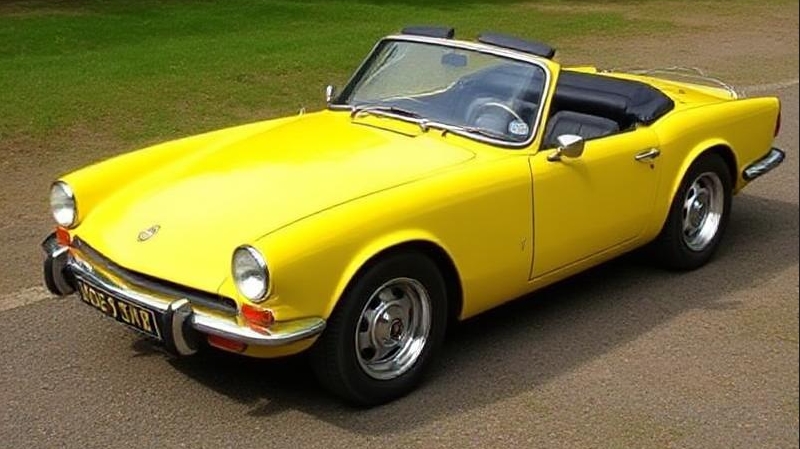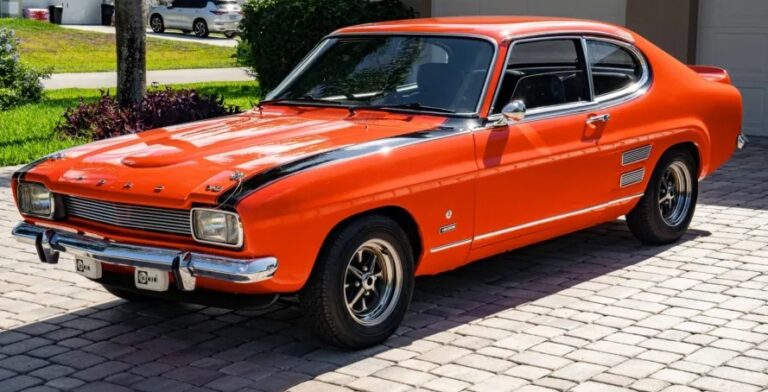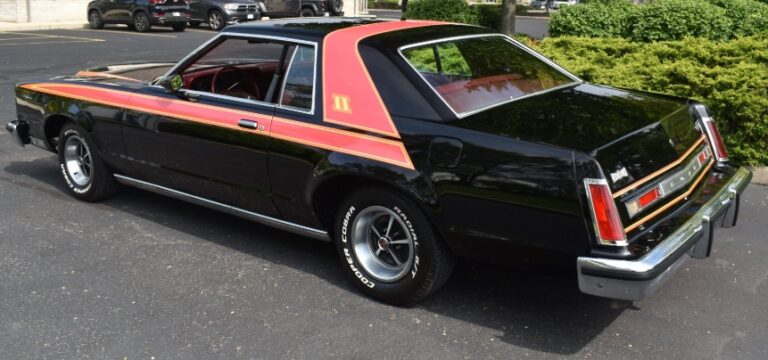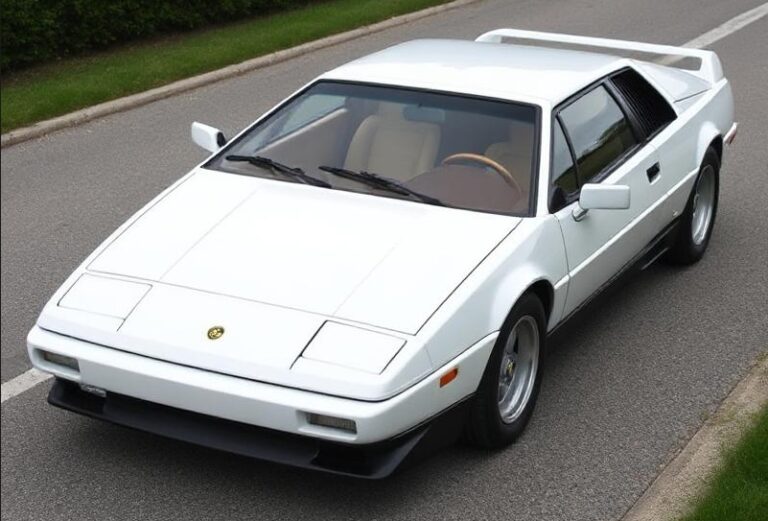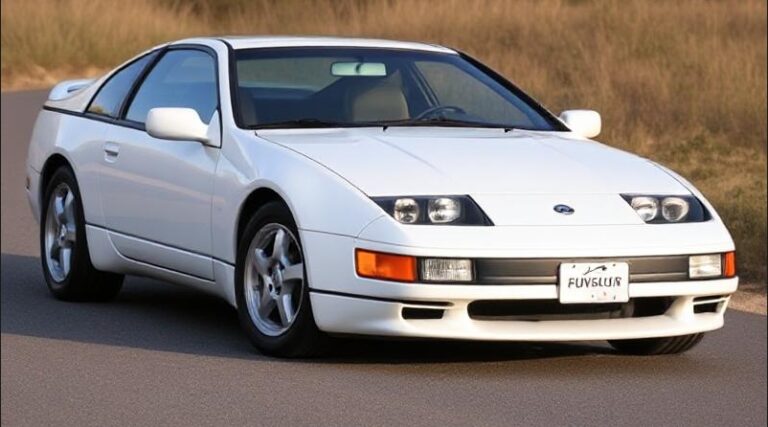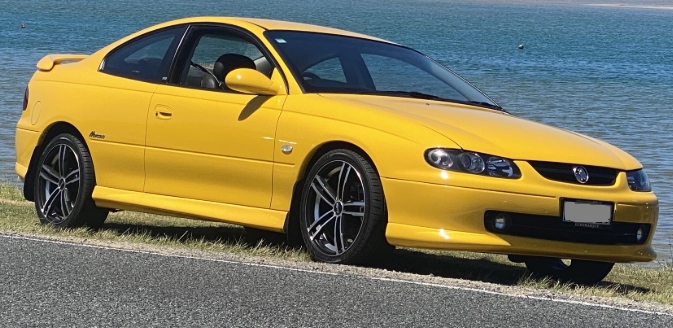The Evolution of the Triumph Spitfire: A Classic British Roadster
The Triumph Spitfire, a charming two-seater sports car, has etched its name into the annals of automotive history. Produced from 1962 to 1980, the Spitfire showcased the unique blend of British design and enthusiastic driving. Over its nearly two-decade lifespan, it underwent several updates and refinements, making it a popular choice among enthusiasts and casual drivers alike.
Origins and Concept
The Spitfire’s journey began in the late 1950s when Triumph’s managing director, Sir John Black, commissioned a small, affordable sports car to compete in the booming automotive market. The project was spearheaded by designer Giovanni Michelotti, who envisioned a product that would be both stylish and functional.
The first prototype was unveiled in 1962, sharing many design elements with the Triumph Herald. With a lightweight body, a lively engine, and a focus on driver interaction, the Spitfire quickly garnered interest. In late 1962, the Triumph Spitfire 4 (also known as the Mark I) was launched, marking the beginning of its production run.
The Mark I (1962-1964)
The Spitfire 4, produced from 1962 through 1964, was powered by a 1.1-liter (1147 cc) four-cylinder engine that generated 63 horsepower. It featured a modestly sporty appearance, with its distinctive lines and a long hood. The Mark I offered an engaging driving experience, with independent front suspension and semi-trailing arm rear suspension, a hallmark of well-handling sports cars of the era.
This model had a very limited variety of trim levels, primarily being offered in a single format. However, optional features such as wire wheels and additional instrumentation allowed buyers to customize their experience.
The Mark II (1964-1967)
In 1964, Triumph introduced the Spitfire Mark II, an evolution of the original design. This version saw enhancements in both style and performance. The engine was upgraded to 1.3 liters (1296 cc), boosting power to 75 horsepower. It also featured a more refined interior and a redesigned dashboard, showing Triumph’s commitment to improving the driver experience.
This model maintained the spirit of its predecessor, offering a single trim level with optional enhancements, including an adjustable steering column and a heater for additional comfort.
The Mark III (1967-1970)
With the Mark III, introduced in 1967, Triumph took another significant step. The 1.3-liter engine was retained but further refined, now producing around 76 horsepower. The Mark III also featured a new, more welcoming interior, with improved seating and a higher level of standard equipment, including a fold-down convertible roof, which became a defining feature of the Spitfire line.
By this point, Triumph was expanding its operations, and as a result, various trim levels and special editions began to emerge. The Spitfire 1300 and the Spitfire 1300S were notable mentions during this era, which offered slightly more performance-oriented features.
The Mark IV (1970-1974)
In 1970, the Triumph Spitfire Mark IV hit the market, receiving several updates to enhance both aesthetics and performance. While the engine capacity remained 1.3 liters, the torque improved, providing better acceleration and responsiveness. The Mark IV also introduced a significant safety feature: a revised grille and larger bumpers to comply with U.S. safety regulations.
During this period, the Triumph Spitfire became popular in the North American market, leading to further refinements, including the addition of an adjustable steering column and other comfort features.
.

.
The 1500 (1974-1980)
In 1974, the final iteration of the Spitfire was introduced: the Spitfire 1500. This version featured a larger 1.5-liter engine (1493 cc) that produced approximately 80 horsepower. The 1500 boasted improvements like a stronger chassis and a more sophisticated suspension setup.
Moreover, the interior saw further refinements, with more comfortable seats and improved materials throughout. The changes in this model were driven heavily by feedback from customers and enthusiasts, showcasing Triumph’s responsiveness to its buyers.
The Spitfire 1500 offered a variety of trim levels, including base models and more luxurious variants. These offered optional features such as canopy tops, upgraded audio systems, and even enhanced wheel designs. However, shifts in automotive regulations, changing market conditions, and economic pressures would ultimately lead to the discontinuation of the Spitfire.
Production and Legacy
The Triumph Spitfire was produced from 1962 until 1980, with a total production run of approximately 314,000 units. While the early models garnered much acclaim for their ingenious design and performance, later models echoed the evolving tastes of automotive enthusiasts, focusing on comfort and reliability without compromising the car’s spirited performance.
The Spitfire was considered an affordable sports car, making it accessible to a broader audience. Its classic British design and lively driving experience made it a beloved sports car among enthusiasts and collectors. It curved around winding roads, drew attention with its distinctive shape, and evoked a sense of freedom that captivated drivers of all ages.
Conclusion
The Triumph Spitfire remains a treasured icon in the world of classic cars. From its debut with the Mark I in 1962 to the final Spitfire 1500 in 1980, this car epitomized the spirit of British motoring. It combined progressive design, innovative engineering, and engaging performance, contributing to its enduring legacy.
Today, the Triumph Spitfire is celebrated by collectors and classic car enthusiasts. Its restoration, preservation, and continued appreciation pay homage to a remarkable evolution of an extraordinary sports car that delivered pure driving pleasure for nearly two decades. As car lovers keep the spirit of the Spitfire alive, its place in history continues to shine brightly.
